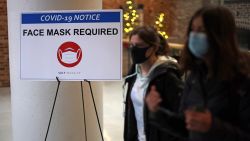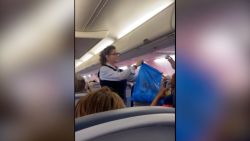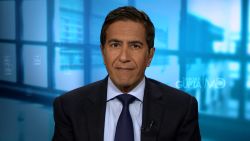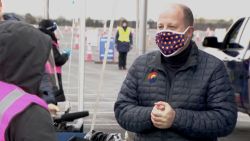Miami-Dade County bus driver Miakeya Rolle says she hasn’t had a good night’s rest since a passenger intentionally spit on her.
On the afternoon of April 19, a homeless woman boarded Rolle’s bus and began coughing on passengers, according to a police report. Rolle told her she needed to wear a mask. The woman spat on Rolle and fled the bus.
Miami, like many transit systems, requires passengers to wear masks during the Covid-19 pandemic.
Rolle cleaned herself off with Clorox wipes and hand sanitizer as she waited for police to respond. She was later tested at a hospital. When she returned home, she undressed outside and threw her uniform in the garbage.
Rolle has yet to return to driving a bus.
“That’s how I feed my family. But as of right now, I can’t do it,” said Rolle, who has tested negative for Covid-19. “I’ve never had anything like that happen to me. I’m about to lose my mind.”
Another Miami-Dade County transit bus driver, Denys Santos, was charged with aggravated assault on April 29 after chasing and swinging a metal pipe at a rider who removed his mask to talk on a cell phone, according to a Monroe County Sheriffs Office police report.
Bus drivers nationwide are facing new challenges as they try to protect passengers and themselves from a virus that’s killed at least 135 transit workers nationwide, according to reports from the largest transit unions, the Amalgamated Transit Union and the Transport Workers Union.
Leaders of transit unions say protections for bus drivers are lacking. They want high-quality masks available more widely, and drivers to get help with new duties, such as enforcing mask requirements and making sure buses aren’t crowded. Some transit systems have put a cap on the number of passengers to promote social distancing. In Milwaukee, Wisconsin, for instance, buses are restricted to 10 passengers.

King County Metro, which operates in Seattle, Washington, is generally limiting capacity to 12 riders on 40-foot buses, and 18 riders on 60-foot buses. Roanoke, Virginia allows no more than nine passengers on buses. Pittsburgh caps its 35-foot buses at 10 people, and 40-foot buses at 15 riders.
John A. Costa, International President of the Amalgamated Transit Union, said that fewer than half of his local unions in the US and Canada have proper protective equipment.
Bus drivers face more risk than colleagues who operate trains or maintenance workers, because they’re in close contact with passengers. Many have no physical barrier between themselves and passengers. Some jurisdictions have tried temporary measures, such as hanging shower curtains, according to Costa. Bus drivers still must touch wheelchairs to help those riders board, exit, and secure their wheelchairs on board.
“I wake up every morning and if I don’t have a report of a fatality it’s like a good morning,” John Samuelsen, international president of the Transport Workers Union, told CNN Business. “That’s how crazy this is.”
Governments and the private companies that operate some buses and trains know they must protect drivers and riders so that ridership eventually returns to levels before the pandemic.
Thierry Mallet, CEO of Transdev, which operates transit systems in 18 countries and has 82,000 employees, said many riders will shift to personal cars.

“We have a key challenge,” he said. “We need to reclaim the trust and confidence of our passengers.”
Transdev is considering offering hand sanitizer on all of its buses and trains, he said.
Transit operators run into practical and cultural hurdles as they take steps to protect workers and passengers. Buses used in US transit systems generally aren’t designed to distance drivers from passengers. And some passengers refuse to wear masks.
European countries like France, Germany and the Czech Republic are requiring masks nationwide as they prepare for a return to regular service and ridership.
Unions representing US transit workers, including the Amalgamated Transit Union, Transport Workers Union of America and AFL-CIO, have called on the Federal Transit Administration to require that passengers wear masks nationwide. The administration has recommended transit agencies make policies regarding facial coverings to reduce the risk of Covid-19, but stopped short of a mandate. Federal law says that the secretary of the Department of Transportation may “issue directives with respect to the safety of the public transportation system.”
The Federal Transit Administration declined to comment for this story.
Some cities and states, including Massachusetts, Illinois and Denver, have started requiring masks this month. Others, such as New York City, already had requirements.
Requiring masks isn’t a panacea, and the requirements can be hard for drivers to enforce. Even worse, they may trigger a backlash or dangerous incidents.
Donna Schinkle, transit director of Chillicothe, Ohio, which introduced a mask requirement this week, said she’s already heard criticism of her requirement.
Unlike most transit operators, Schinkle isn’t overly concerned about people shying away from transit because of Covid-19 fears.
“For the majority of folks in Southern Ohio, they just seem to think it really isn’t a thing,” she said. “We have more of a struggle of trying to make them abide by the rules.”
























